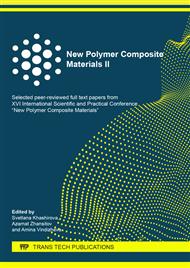p.163
p.169
p.175
p.182
p.190
p.196
p.202
p.209
p.218
Properties of Hyperbranched Polyglycidol’s Derivatives
Abstract:
Some properties (enthalpy of formation, glass transition temperature and rheological parameters) of hyperbranched polyglycidol derivatives containing nitrate and azide functional groups were investigated. The dependence of the found properties on the molecular weight, composition and structure of the investigated substances was determined.
Info:
Periodical:
Pages:
190-195
Citation:
Online since:
October 2020
Authors:
Price:
Сopyright:
© 2020 Trans Tech Publications Ltd. All Rights Reserved
Share:
Citation:


